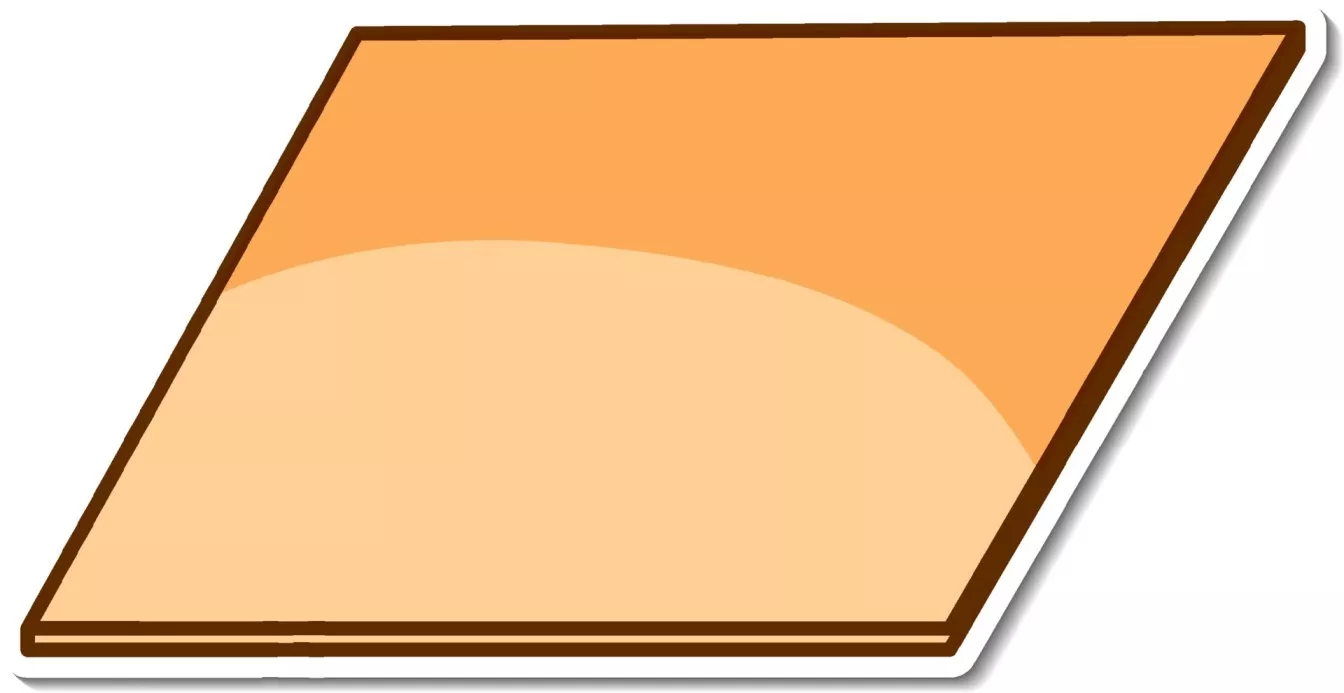Table Rates
In this article, we will be learning about rates. We will also be solving the problems related to rate.
The learning objectives are:
- Understanding table rates
- Solving word problems involving table rates
1. Understanding Table Rates
Rate is a ratio comparing two quantities. It is expressed as one quantity per unit of another quantity.
Example:
The speed of a car is \(80 \text{ km/h}\). We read this as the speed of a car is \(80 \text{ kilometers per hour}\). This means that the car travels a distance of \(80 \text{ km in one hour}\).
Question 1:
The table shows the photocopying charges in a shop.
| Number Of Copies | Cost Per Copy |
|---|---|
| First \(10\) copies | \(10\) cents |
| Additional copies | \(5\) cents |
What is the cost of photocopying \(60\) copies of a document?
Solution:
Cost of first \(10\) copies \(= 10\) cents per copy
Cost of photocopying the first \(10\) copies
\(= 10 \times 10\) cents
\(= 100\) cents
Cost of additional copies \(= 5\) cents per copy
Number of additional copies
\(= 60 - 10\)
\(= 50\)
Cost of photocopying \(50\) additional copies
\(= 50 × 5\) cents
\(= 250\) cents
Total cost of photocopying \(60\) copies
\(= 100\) cents \(+ \;250\) cents
\(= 350\) cents
\(= $3.50\)
Answer:
\($3.50\)
Question 2:
The table shows the photocopying charges in a shop.
| Number Of Pages | Cost Per Page |
|---|---|
| First \(150\) pages | \($0.15\) |
| Next \(100\) pages | \($0.05\) |
| Subsequent pages | \($0.02\) |
How much does it cost to photocopy \(400\) pages?
Solution:
Cost to photocopy the first \(150\) pages
\(= 150 \times $0.15 \)
\(= $22.50\)
Cost to photocopy the next \(100\) pages
\(= 100 \times $0.05 \)
\(= $5\)
Number of pages left
\(= 400 - 150 - 100 \)
\(= 150\)
Cost to photocopy subsequent \(150\) pages
\(= 150 \times $0.02\)
\(= $3\)
Total cost to photocopy \(400\) pages
\(= $22.50 + $5 + $3 \)
\(= $30.50\)
Answer:
\($30.50\)
Question 3:
The table shows the rate of charges for electricity consumption.
| Units Of Electricity | Cost Per Unit |
|---|---|
| First \(25\) units | \($0.80\) |
| Next \(20\) units | \($0.95\) |
| Subsequent units | \($1.20\) |
How much will Mr Richard pay if he uses \(60\) units of electricity?
Solution:
Cost of first \(25\) units of electricity
\(= 25 \times $0.80\)
\(= $20\)
Cost of next \(20\) units of electricity
\(= 20 \times $0.95 \)
\(= $19\)
Number of units of electricity left
\(= 60\) units \(- \;25\) units \(- \;20\) units
\(= 15\) units
Cost of subsequent \(15\) units of electricity
\(= 15 \times $1.20\)
\(= $18\)
Total cost of \(60\) units of electricity
\(= $20 + $19 + $18 \)
\(= $57\)
Answer:
\($57\)
2. Solving Word Problems Involving Table Rates
Part thereof
Part thereof refers to any portion of the stated part.
It does not have to be an entire portion, but any small portion of that part will be considered as a whole part as well.
Question 1:
The table shows the parking rates at a car park.
How much does Ivan have to pay if he parks his car at the car park for \(1\) h \(40\) min?
| Duration | Charges |
|---|---|
| First \(\begin{align} \frac{1}{2} \end{align} \) hour | \($0.90\) |
| Subsequent \(\begin{align} \frac{1}{2} \end{align} \) hour or part thereof | \($0.50\) |
Solution:
Cost of the first \(\displaystyle{\frac{1}{2} \text{ hour}}\) of parking \(= $0.90 \)
\(\displaystyle{\frac{1}{2} \text{ hour} = 30 \text{ min}}\)
Time left
\(=1 \text{ h } 40 \text{ min } - 30 \text{ min}\\ =1 \text{ h } 10 \text{ min}\\ =70 \text{ min}\)
Number of \(\displaystyle{\frac{1}{2} \text{ hour}}\) or part thereof in \(1 \text{ h } 10 \text{ min}\)
\(\displaystyle{ = 70 \text{ min } \div 30 \text{ min }\\ = 2\frac {1}{3}\\ = 3}\)
Cost of parking for subsequent \(1 \text{ h } 10 \text{ min}\)
\(= 3 \times $0.50\)
\(= $1.50\)
Total cost of parking for \(1 \text{ h } 40 \text{ min}\)
\(= $0.90 + $1.50\)
\(= $2.40\)
Answer:
\($2.40\)
Question 2:
The table shows the fare for hiring a taxi.
| Distance | Charges |
|---|---|
| First \(240 \text{ m}\) | \($3.20\) |
| Every \(100\text{ m}\) thereafter or less for the next \(800 \text{ m}\) | \($0.22\) |
| Every \(120\text{ m}\) thereafter | \($0.15\) |
How much did Rita have to pay if she travelled \(1.4 \text{ km}\)?
Solution:
\(\begin{align} 1.4 \text{ km} &= 1.4 \times 1000 \text{ m}\\ &= 1400 \text{ m} \end{align}\)
Cost of the first \(240 \text{ m} = $3.20\)
Cost of next \(800 \text{ m}\)
\(= 8 \times $0.22\)
\(= $1.76\)
Distance left
\(= 1400 \text{ m } - 240 \text{ m } - 800 \text{ m }\\ = 360 \text{ m }\)
Number of \(120 \text{ m }\)in \(360 \text{ m }\)
\(= 360 \text{ m } \div 120 \text{ m}\\ = 3 \text{ m}\)
Cost of remaining \(360 \text{ m }\)
\(= 3 \times $0.15\\ = $0.45\)
Total cost of \(1400 \text{ m }\)
\(= $3.20 + $1.76 + $0.45 \)
\(= $5.41\)
Answer:
\($5.41\)
Question 3:
The table shows the charges for surfing the internet in a cyber cafe.
a
| Duration | Charges |
|---|---|
| First hour | \($8.00\) |
| Subsequent \(12 \text{ hour}\) or part thereof | \($3.50\) |
a
Ramesh paid \($22\) for surfing the internet in the cafe. What was the greatest possible number of hours he spent surfing the internet?
Solution:
Total amount paid at the internet cafe \(= $22\)
Cost of first \(1 \text{ hr} = $8\)
Cost for the rest of the time
\(= $22 - $8\\ = $14\)
Number of half an hour in \($14\)
\(= $14 \div $3.50\\ = 4\)
\(4 \;\times\) half an hour \(= 2 \text{ h}\)
Greatest possible number of hours
\(= 1 \text{ h} + 2 \text{ h}\\ = 3 \text{ h}\)
Answer:
\(3 \text{ h}\)
Question 4:
The table shows the charges for each overdue book borrowed from a library.
| Number Of Days Overdue | Charges Per Day |
|---|---|
| First \(7\) days | \($0.10\) |
| \(8^{\text{th}}\) day onwards | \($0.50\) |
Daniel borrowed a book from the library. The book was overdue when he returned it. He paid a total of \($2.20\) for the overdue book. How many days was the book overdue?
Solution:
Total amount paid for the overdue book \(= $2.20\)
Amount paid for the first \(7\) days
\(= 7 \times $0.10 \)
\(= $0.70\)
Amount paid for the remaining days
\(= $2.20 - $0.70 \\ = $1.50\)
Number of \($0.50\) in \($1.50\)
\(= $1.50 \div $0.50\\ =3\)
Total number of days the book was overdue
\(= 7 \text{ days} + 3 \text{ days}\\ = 10 \text{ days}\)
Answer:
\(10 \text{ days}\)
Question 5:
The table shows the postage fee for a parcel.
| Weight Of Parcel | Charges |
|---|---|
| First \(5 \text{ kg}\) | \($10\) |
| Every additional \(5 \text{ kg}\) thereafter or less | \($3\) |
Gary wants to send a parcel and is charged \($28\) for the postage fee. What is the smallest possible mass of the parcel given that the value of the mass is a whole number?
Solution:
Total postage paid \(= $28\)
Cost of first \(5 \text{ kg}\) of parcel \(= $10\)
Cost of subsequent mass of the parcel
\(= $28 - $10\\ =$18\)
Number of \($3\) in \($18\)
\(= $18 \div $3\\ = $6\)

Smallest possible mass of parcel
\(= 5 \text{ kg } + 5 \times 5 \text{ kg } + 1 \text{ kg }\\ = 5 \text{ kg } + 25 \text{ kg } + 1 \text{ kg }\\ = 31 \text{ kg }\)
Conclusion
In this article, we learnt about Table Rates as per the Primary 5 Math requirements. We learnt how to read the table rates. We tried to solve questions on the same concept.
The meaning of part thereof is important. Do pay attention to it when you see it in the word problem.


 SG
SG  VN
VN 
















